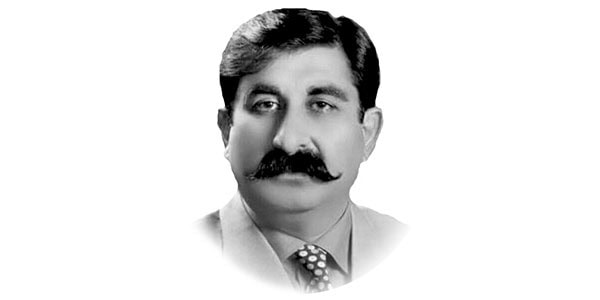Pressure cooker
PAKISTAN’S economy is showing horrible indicators. Growth has picked up, but the debts are sky-high.
Infrastructure and energy sectors have improved considerably but the current account balance is not in our favour.
In 2017, China poured billions of dollars into energy and infrastructure investment into Pakistan and World Bank praised Islamabad for accelerating gross domestic product growth, which exceeded 5 per cent that fiscal year — the highest in nearly a decade.
The PML-N government is looking at the slowest growth rate in South Asia as more that 225 million Pakistanis struggle with runaway food inflation and rising unemployment.
After the country recorded negative growth for the first time since 1952 last year, China’s enthusiasm for turning around Pakistan’s economic fortunes appears to have cooled down, too.
If PML-N government fails to return GDP growth to 5 per cent Pakistan will be at God’s mercy for the next four years.
He also lamented tough IMF conditionalities that require Pakistan to increase revenue by raising taxes and adopting austerity by cutting subsidies — both of which economists say contribute to runaway inflation.
Since 2019, Pakistan has followed a $6 billion IMF loan program that requires it to increase tax collection through reforms while adopting measures to bridge the budget deficit.
Pakistan sells textiles worth billions of dollars to the EU each year without customs duties. Our people are really sick of rising inflation. At this moment, we don’t have the capacity to increase tariffs or taxes.
There’s an uphill struggle ahead for Pakistan.The spectre of high inflation and low GDP growth is a very problematic scenario for Pakistan.
This is not going to be an easy ship to turn. With a few job options, Balochistan residents turn to smuggling.
Imran Khan’s accountability drive, which largely targeted PML-N and PPP politicians for alleged corruption, only served to scare the business community and send the country’s civil bureaucracy into shutdown mode.
The Administration’s lack of a clear economic vision beyond joining the IMF program in 2019 only made matters worse.
The structural adjustment policy followed under the IMF aegis was contractionary and low growth and put the economy on a path to very slow growth, high interest rates, and increasing unemployment.
The World Bank has projected 1.3 percent GDP growth for 2020- 21 while the IMF’s estimate is slightly higher at 1.5 per cent.
The only area where things are better is the external account, where the reduction in imports and the increase in remittances have improved the situation somewhat.
But the fiscal position is very poor with an unmanageable increase in debts. With the rise of interest rates, the economy slowed down.
With the devaluation, inflation came in. When inflation rises employment shrinks, of course, you have more poverty.
Imran Khan’s government moved fast on hiking interest rates from over six per cent to more than 13 per cent after assuming office in August 2018 as the Pakistani rupee rapidly devalued more than 25 percent against the dollar.
Government and international statistics show poverty among Pakistan’s rapidly expanding estimated 220 million population is on the rise.
International lenders expect poverty to rise to more than 40 percent from 24 percent in 2020, and the country could be home to as many as 80 million poor compared to some 55 million in 2020.
With shrinking GDP, employment has also shrunk considerably. In a country where 1.8 million people join the labour market every year, you need growth of at least 5.5 percent to 6 percent to absorb all the growth.
While the current government’s initial indecision contributed to stagflation marked by no growth and rising inflation, country’s economic troubles are much deeper and need to be analyzed without partisan bias.
Pakistan is an agriculture country where the real wealth comes from the agricultural sector, which earns the country most of its wealth, especially foreign currency.
Bumper wheat crop and rising agricultural commodity prices on international markets contributed to the revised growth figures Pakistan is now brandishing as a success.
There is no sustainable mechanism to beef up the agricultural sector.As long as the government doesn’t do it, the current upturn probably will remain short-lived.
The revised growth figures are a positive sign of a nascent recovery taking hold.
However, the growth is coming on the back of significant fiscal and monetary support, particularly to the real estate sector.
This creates the risk of incentivizing too many resources in a sector that doesn’t build Pakistan’s long-term productivity and export capacities.
Successive governments have ignored agriculture and instead focused on rising domestic growth by building infrastructure financed by mounting debts.
The real estate sector was touted as the major money-making sector.
This ultimately leads to a lot of parking of capital in a virtually dead productive sector.
This has been a pattern in Pakistan during the last few decades with very few exceptions that most of the capital is allocated to sectors that are non-productive.
Pakistan’s economy suffers from structural vulnerabilities. Successive governments have typically overvalued the exchange rate as a way to subsidize consumption.
This, he argues, makes exports cheaper and prompts consumption-led spending, which is further accentuated by larger spending on public-sector development programs — a formula some previous administrations followed.
If your currency is overvalued, your exporters are losing out with the rest of the world meaning that your imbalances in the current account continue to grow.
It’s like a pressure cooker — the pressure keeps on building and eventually it blows up.
—The Islamabad-based writer is editor, book ambassador, political analyst and author of several books based.










